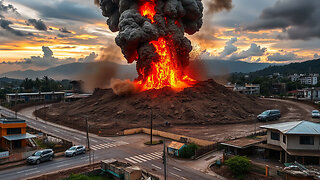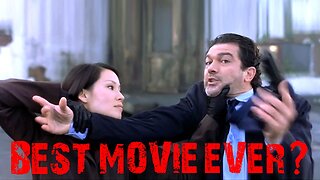Premium Only Content

USA NOW! Florida Hit Again: Hurricane Milton’s Catastrophic Impact Just Weeks After Helen
For several days, residents of the state of Florida in the USA were in anxious anticipation of the impact of Tropical Hurricane Milton, which shocked meteorologists even before it made landfall.
The hurricane intensified from Category 1 to the highest, Category 5, reaching speeds of 180 miles per hour in just 12 hours. It moved much faster, was more compact, and organized than most other tropical storms.
Abnormally warm waters in the Gulf of Mexico and increased atmospheric humidity created perfect conditions for the formation of this monster.
In Florida, which had suffered the deadly blow of Hurricane Helen less than two weeks earlier, an evacuation was declared for millions of people. Emergency services were quickly clearing debris left by Helen, which the winds could turn into dangerous projectiles, destroying everything in their path.
As it approached the coast, Milton triggered a tornado outbreak across Florida, including three tornadoes in St. Lucie County, which destroyed hundreds of homes and claimed the lives of at least four people.
According to the National Weather Service (NWS), at least 27 tornadoes were recorded in the state on October 9.
Weakening to a Category 3 hurricane with winds up to 120 miles per hour, Milton made landfall on Florida’s coast near Sarasota County that evening.
Hurricane-force winds damaged homes. Roads became impassable due to fallen trees and downed power lines. The sky was lit up by flashes of exploding transformers. As a result of the storm, over 3.3 million customers were left without power.
In the city of St. Petersburg, wind gusts toppled a tower crane onto a nearby building and ripped the roof off Tropicana Field, the home stadium of the Tampa Bay Rays baseball team, which was supposed to serve as a temporary shelter for thousands of rescuers and cleanup crews.
Milton caused a life-threatening storm surge and brought an enormous amount of rain, exceeding forecasts. The heaviest rainbands hit the Tampa Bay area.
In some places, up to five months' worth of rainfall fell in just a few hours.
In Pinellas and coastal Hillsborough counties, 18 inches of rain were recorded.
In Hillsborough County, more than 130 people were rescued from a nursing home where, on Thursday morning, responders found residents waist-deep in water.
In the city of Fort Myers, as a local resident was about to get into his car, an alligator suddenly leaped out of the water brought by the hurricane.
As Milton moved inland, it weakened to a Category 1 hurricane but remained a dangerous storm, carrying winds and unusually heavy rainfall.
According to officials, by October 10, at least nine people had died as a result of Hurricane Milton.
The true scale of the tragedy and destruction has yet to be fully assessed.
However, according to FEMA Director Deanne Criswell, Florida managed to avoid the worst-case scenario this time.
Milton is already the third major hurricane to hit Florida this year, an extremely rare occurrence.
The world is witnessing a catastrophic increase in disasters, their anomalies, and intensity. Unfortunately, these catastrophes will soon affect every inhabitant of our planet, but even in such a critical situation, there is a chance to stop the development of climate disasters and minimize their consequences. Scientists at the forum "Global Crisis. The Responsibility" proposed joint solutions to the climate problem. Explore the forum’s information and start acting!
-
 11:25
11:25
AllatRa TV
4 days agoColombia NOW! Dual Disaster: Mud Volcano Eruption and Historic Flooding
102 -
 10:12
10:12
Space Ice
23 hours agoBallistic: Ecks vs Sever - Underrated Masterpiece Or Incoherent Mess?
20.6K9 -
 2:43:07
2:43:07
RG_GerkClan
6 hours agoLIVE: Lets Get to 500 FOLLOWS! - Escape From Tarkov - Gerk Clan
22.9K4 -
 LIVE
LIVE
Vigilant News Network
20 hours agoHillary Clinton EXPOSED In Another Massive Hoax | The Daily Dose
1,798 watching -
 1:00:17
1:00:17
Trumpet Daily
1 day ago $6.55 earnedRINOs Are Trump’s Biggest Enemy Now - Trumpet Daily | Nov. 22, 2024
12.4K20 -
 17:47
17:47
RealReaper
14 hours ago $0.44 earnedGladiator 2 Another Pointless Sequel
7K3 -
 45:45
45:45
PMG
13 hours ago $0.30 earned"Hannah Faulkner and Stephanie Nash | No Farms No Food"
5.78K -
 27:11
27:11
Degenerate Plays
1 day ago $0.23 earnedReturn Of The Online Girlfriends - Stellar Blade : Part 30
4.82K -
 7:16
7:16
SeasonofMist
2 days agoSOLSTAFIR - Fjara (Official Music Video)
3.87K2 -
 3:54
3:54
Good Kid Productions
9 days agoTrump just broke legacy media. We're building something better.
2.79K